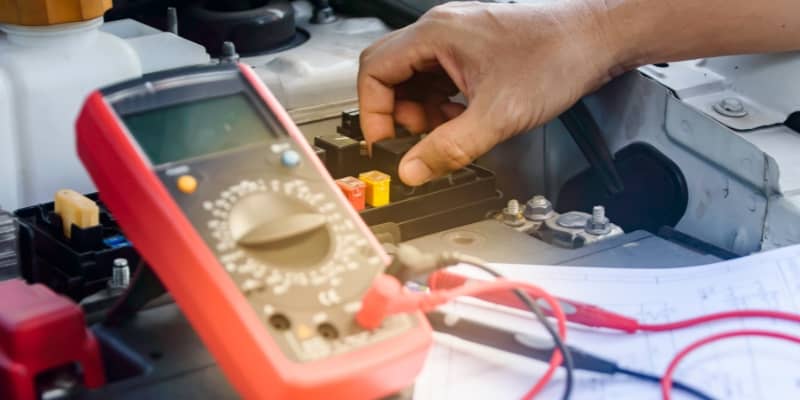In trucking, the open road is both a canvas and a challenge. Truckers navigate vast distances, encountering unpredictable terrains and weather conditions. In this dynamic environment, the ability to perform on-the-spot truck repairs becomes a valuable skill for every driver. Whether you’re a seasoned trucker or just starting in the industry, having a quick-fix guide in your toolkit can differentiate between a minor setback and a major disruption. This blog post explores essential tips and tricks for on-the-spot truck repairs, ensuring you stay strong on the highways.
1. Flat Tire Woes: Mastering the Art of Tire Changes
Flat tires are a common hiccup on the road, and every trucker should be well-versed in changing a tire swiftly. Ensure you have a reliable and well-maintained spare tire and the necessary tools – a jack, lug wrench, and tire pressure gauge.
When changing a tire, prioritize safety by parking on level ground, engaging your hazard lights, and using warning triangles to alert other drivers. Loosen the lug nuts before lifting the truck with the jack, replace the flat tire with the spare, tighten the lug nuts, and lower the car. Remember to check the spare tire’s pressure to ensure it’s road-ready.
2. Electrical Glitches: Diagnosing and Fixing Electrical Issues
Electrical problems can range from a dead battery to faulty wiring. Before hitting the road, regularly inspect your truck’s battery terminals for corrosion and ensure they are tightly connected. Carry a set of jumper cables to jump-start the car if needed.
A basic understanding of your truck’s wiring can be invaluable for electrical glitches beyond the battery. Carry a multimeter to check for continuity and voltage. Simple fixes like replacing a blown fuse or securing loose wires can often be done on the spot.
3. Air Brake Blues: Addressing Air Brake System Issues
A malfunctioning air brake system is a serious concern that demands immediate attention. Regularly inspect the air lines, valves, and chambers for leaks or damage. Diagnosing and addressing the issue promptly is crucial if you notice a loss of air pressure or hear unusual sounds.
Carry a set of emergency glad-hand seals to replace any damaged ones, and keep an air brake system antifreeze solution on hand to prevent freezing in cold temperatures. Familiarize yourself with the manual brake release on your truck, as this can be useful in certain situations.
4. Cooling System Quandaries: Managing Overheating Situations
An overheating engine can quickly sideline your truck, making it essential to address cooling system issues promptly. Regularly check coolant levels and inspect for leaks in hoses, radiator, and the water pump.
Carry extra coolant, water, and radiator hoses in your toolkit. In case of overheating, pull over immediately, turn off the engine, and wait for it to cool before opening the radiator cap. Add coolant as needed, and check for visible leaks. If the problem persists, seek professional assistance.
5. Belt Breakdowns: Replacing Serpentine Belts on the Go
A broken serpentine belt can bring your truck to a halt, affecting crucial components like the alternator and water pump. Familiarize yourself with the location of the serpentine belt and the routing diagram under the hood.
Carry a spare serpentine belt that matches your truck’s specifications and the necessary tools to replace it. When a belt breaks, carefully thread the new one following the diagram, ensuring proper alignment. Regularly inspect belts for wear and replace them preventively to avoid on-the-road breakdowns.
6. Fuel Filter Failures: Keeping the Fuel Flowing
A clogged fuel filter can lead to engine performance issues or stalling. Know the location of your truck’s fuel filter and carry a spare, along with the necessary tools to replace it.
Inspect the fuel filter if you experience a drop in engine power or suspect a fuel-related issue. Replace it if necessary and carry a funnel and extra fuel to prime the system if air enters the fuel lines during the replacement.
7. Minor Engine Issues: Tackling Common Engine Hiccups
While major engine problems may require professional attention, knowing how to address minor issues can keep you rolling strong. Familiarize yourself with your truck’s engine components, such as sensors and hoses.
Carry basic engine fluids like oil and coolant and regularly check levels. Replace air filters and fuel filters preventively. If your truck’s engine diagnostic system indicates a minor issue, use a code reader to identify and address the problem if it is within your capabilities.
8. Emergency Repairs Kit: Assembling Your Roadside Arsenal
In addition to specific tools and spare parts for common issues, having a well-equipped emergency repairs kit is essential. Include duct tape, zip ties, a tire repair kit, a flashlight, extra fuses, and basic hand tools.
A comprehensive kit can empower you to address unforeseen challenges on the road, offering temporary solutions until professional assistance is available.
Conclusion: Empowering Truckers to Roll Strong
Mastering the art of on-the-spot truck repairs is more than a skill – it’s a mindset that empowers truckers to navigate the challenges of the open road confidently. Regular inspections, preventive maintenance, and a well-equipped toolkit can distinguish between a minor hiccup and a major setback.
By integrating these tips into your trucking routine and staying prepared for common issues, you can ensure that your journey remains smooth, efficient, and, most importantly, rolling strong on the highways.







